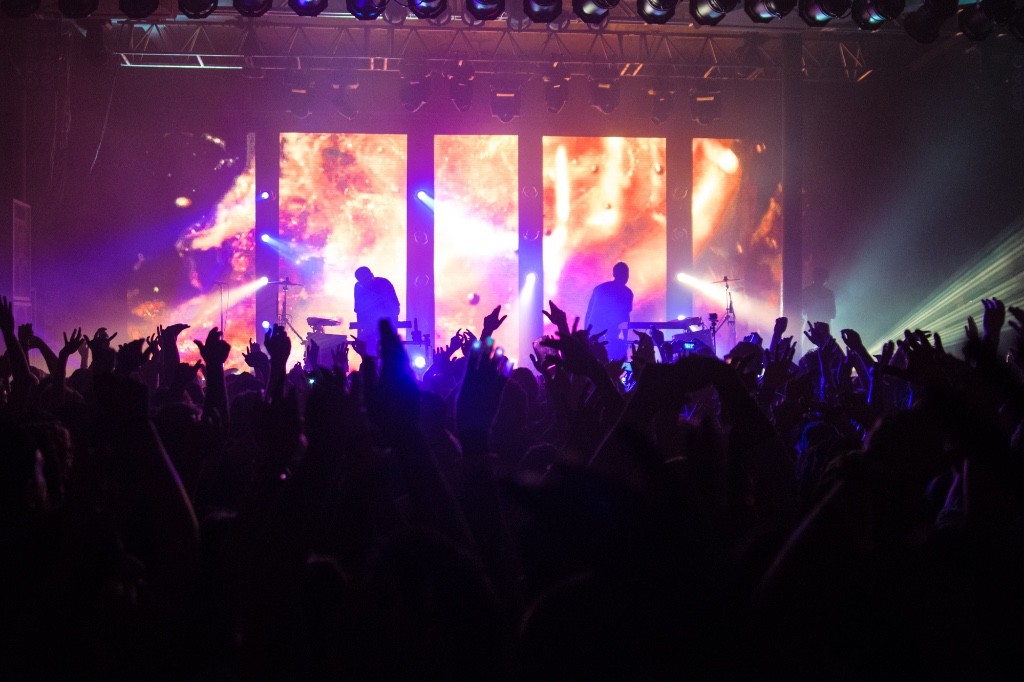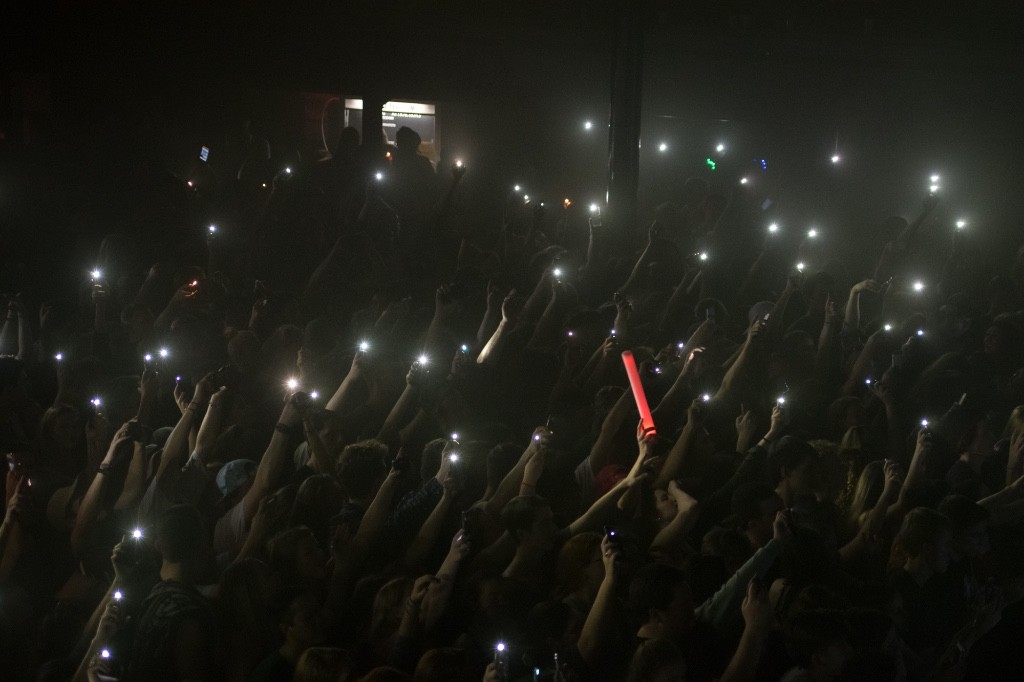ODESZA Interview
KDUP’s Joel Simard and Johnny Boddy sat down with Harrison Mills and Clayton Knight of ODESZA to talk about their driving creative force, life on the road, and the old college days.
©JOEL ANDREW SIMARD
Watching you two grow into a phenomenon since your debut release, Summer’s Gone (2012), and here you are with with back to back sold out nights in Portland, and three sold out shows in Seattle. How does it all feel?
Harrison & Clay: [laughs] It has been surreal. It’s been nonstop since that release, and I don’t really think a lot of it has set in. We will get some time off here soon and hopefully adjust to the success, get a second to comprehend what has all happened.
Joel and I first saw you this past summer at What The Festival, you guys did a great job, it was an amazing set.
Clay: Thanks guys that was a fun one, WTF is always a good time.
Harrison: Our friends actually throw that festival, so it’s really cool to come back and see the people that have supported you from the beginning. They work with Emancipator a lot, and our tour with Emancipator was one of the first tours we ever did. WTF feels like coming back to home in a way.
Is it good to be back in the Northwest?
Harrison: Yeah we miss it, this is home to us. It’s an instant relief when we get in. We travel to so many places, being able to come back to somewhere you love is very important.
When you come back to the northwest do you make a point to play more shows?
Clay: It all just depends on the schedule. When we first started planning this tour, none of the stops were multiple dates, except for maybe a couple. But the demand was there so we had to keep adding on. Doing three at home [Seattle] is definitely really special.
©JOEL ANDREW SIMARD
The title track in Summers Gone, you have a man talking about recording sounds over themselves in order to create new sounds. If you could elaborate on the creative process behind your music, especially with the new album In Return.
Harrison: To first explain that quote: when we were starting out in Bellingham, electronic music wasn’t a well-known thing, especially with the producing we were doing. So trying to explain what we were doing to friends, family, acquaintances, it was very difficult. People would often ask, well what do you play? Well I use synthesizers but I am more of a producer layering sounds, and people would get confused.
Clay: You lose them quickly.
Harrison: Exactly! So that quote explained what we were trying to do with that album; and that was finding unique, exotic sounds and then blend them all together in this… hopefully genre-less sound. I think that is what we go for in a lot of our music. A lot of our album music is more headphone oriented, it is built to have personal experiences. So is you are riding the bus home late at night late, you are going to connect to the song more than say, if you just hear a song at a party. That is the way Clay and I connect with music. The music that has always influenced us has always been personal. I think that’s what we went back to with In Return. Getting back to music we love and care about and then thinking why we love that music? How do we do that in our own way?
That is one thing that definitely draws listeners to your music, there seems to be an intelligence behind it that is unrivaled within electronic music today.
Clay: We take a lot of influences from kinda weirder stuff; Boards of Canada, Four Tet. That genre [electronic] was a big influence for me growing up. We were always into weird music. We were the only people we knew that was into that kind of music.
What is some of the weirder stuff you listened to back in the day?
Harrison: I was listening to this dude named [Auden Osdale], and he would take odd things like church choirs or people talking, then add a crazy hip/hop beat, and then just distort the shit out of it. That blew me away. I was like what the hell am I listening to? How did he make this? Just weird, gritty, more sound design based music. Also, we love Animal Collective, which I think was more popular where we were, not all of it was odd music. We would listen to a soul records and the next thing we would put on would be a top 40 hit, and then a song that has 200 plays on SoundCloud. So for us, we have this wide range of music that we love. I think the palettes are changing in an internet age where everyone can listen to anything at convenience. We are a part of that generation that is getting a broader range of music all the time. That is something we loved growing up; all these different sounds at an easier access. So for us, a lot of what we do is unifying various influences and sounds that we love.
Clay: Layering unique sounds and making them work, when it shouldn’t, that is the key idea.
If you weren’t doing music, what would you be doing?
Clay: I would be finishing school. I had plans to go to grad school after college, but then ODESZA took off, so I put all that aside. If it hadn’t worked out, I would be back at school.
Harrison: I would probably be doing some sort of art or design, like art directing, or working at a label where I get to make creative decisions. I struggle with being passionate about someone else’s passion, so for me I have to choose a route where I get to be my own boss.
©JOEL ANDREW SIMARD
What about dream collaboration?
Harrison: A lot of people man. There is a lot of talent out there. There are so many people who aren’t famous but are so talented that we would love to work with.
Clay: Dream collabs never really work. There is a lot of ego involved, especially with bigger artists. We actually prefer working with people who don’t have that much of a following.
Harrison: They are hungry.
Clay: Exactly! There is more passion involved, usually more open minded to weirder stuff.
Harrison: When you have to get through three managers to get to the artist, already you have set a tone that just doesn’t feel right.
Clay: There are high expectations as well, so dream collabs in theory sound great.
Harrison: Unless they are down to earth, it is not going to work. You can’t force anything
Clay: So dream collabs, anyone who is open minded and want to try some weirder shit.
Harrison: I think a lot of people look at our music and pull out a song that has done well, and then say, “Let’s re-create that song with this popular artist!” Well that’s not our goal, our goal is to try something new every time. So approaching someone and saying hey, we really like your music how can we do something new together? That’s scary for a lot of artists when they have a mindset to create the next hype-track in order to get more buzz.
©JOEL ANDREW SIMARD
Highs and lows of touring?
Harrison: The low is that it is exhausting, it gets very intense. We have done double nights, two shows in one night, we did nine shows in eight days last week! Also, I am not sure if people realize that we don’t just show up, play, and leave; we are there during sound check, working with the crew, changing stuff that did not work the night before, etc. We put a lot of effort into every show.
The high is that we get to do this for a living, which is the coolest thing in the world. Another high would be when we see the respect from fans when we create certain risky moments in live shows. For example, we have a three-minute ambient moment with horns. Going in, we didn’t know how people would react, especially it was a crowd of five thousand people. Asking hey everyone, quiet down and listen to this, it’s a big risk to take. People easily could have just started talking and not listened at all. Yet every single audience has been respectful it has been really cool to see the fans accept these moments.
Are you busting out the horns tonight?
Clay: Oh they will be here.
Harrison: Guitar and bass as well!
How do you pull those artists to play for you?
Harrison: They all went to college with us.
Clay: Shaun, the guitar player, he went to my high school. So we go way back.
Harrison: He introduced us.
Clay: Yeah he is also one of our secret producers, he helps us a lot.
Harrison: He is the tester of our new stuff as well.
Clay: As far as the horn guys, we all had similar friend groups. One of the promoters in Bellingham connected us with them. It’s a very tight-knit community in Bellingham, everyone knows everyone.
[enter Rob stage left]
Harrison & Clay: [jokingly] We have an interview, Rob, get out.
Rob: I forgot you were doing that.
[laughs]
©JOEL ANDREW SIMARD
Who does the artwork for your albums.
Harrison: I went to school for art design so I do all of those. The art is a collage of of different images, feelings, tones, colors, etc. which is again representative of how we approach music.
Yes, back to the whole pulling from various sources. Do you pull a lot from old vinyl records?
Clay: We used to a lot more sampling from vinyl, but we live in dangerous times so with In Return there is no sampling whatsoever. Summer’s Gone was straight samples with some bass work and synth work over the top. Very hip/hop influenced, and again just taking something that was something, completely changing it, chopping it up, reversing it, playing with different elements… you end up making something new that might have been old and lifeless.
Harrison: I think what makes remix culture so powerful is that people have a reference point to what you are doing. They can hear the original is one way, and you made it this way. There is power there. People can hear the difference between the two and get the message. That is what I think made remixing so big.
©JOEL ANDREW SIMARD





